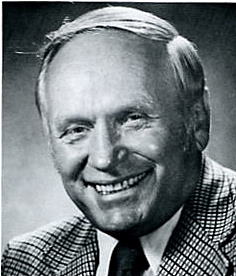
Tribute to John Bridgers
By Jim Joanos
John Bridgers was one of the good guys. His recent death in Albuquerque, New Mexico, at 84 years of age stirred a lot of pleasant memories among FSU sports fans. The friendship that I enjoyed with Bridgers when he was FSU's athletic director from 1973 to 79 has been one of the highlights of my sixty years as an FSU fan. He was a most positive and enthusiastic person. It made you upbeat just to be around him. Make no mistake, he went through a lot of ups and downs during his more than fifty years of involvement in college and professional sports but throughout it all, he managed to keep a most healthy attitude about it all.
 |
When he came to FSU there were problems. The financial status of the athletic program was deep in the red. The football program was in a mess. During the seven years that he was at FSU, there was unbelievable change. Not only did the program's financial situation improve, but the football team went from the bottom to challenging for the top. In the first year that he was at FSU, the football team went 0-11. In his last year as athletic director, 1979, the football team under Bobby Bowden's leadership went undefeated (11-0) during the regular season and appeared for the first time in one of the premier bowl games, the Orange Bowl. While Bowden was the coach that first took FSU to the top echelon in college football, Bridgers was the athletic director that assisted in that accomplishment.
While Bridgers was FSU's athletic director, he was involved in the hiring of two head football coaches, first, Darrell Mudra, and then Bowden. It is most interesting that both men, Mudra and Bowden, have been honored by receipt of college football's most prestigious award, membership in its Hall of Fame.
Not as apparent as FSU's success in football during Bridgers tenure was his importance in supporting the other sports at the school. Because of the difficult financial situation that he inherited, there were pressures to reduce the support to and even eliminate some of the non-revenue sports. However, Bridgers resisted and insisted that those sports remain viable. Consequently, those sports were allowed to continue and improve. A great deal of credit should go to Bridgers for the all round success of FSU's athletic program.
Good memories about John Bridgers are not just the possession of FSU fans. There are good memories about him at a lot of other places where he had positive effects upon sports programs. At Auburn, they remember him and his identical twin brother, Frank, who sandwiched playing on their football teams between stints of military duty back in the World War II days. They know about the Purple Heart that John Bridgers earned for his injury in World War II. They remember him at Sewanee where he started his career as track coach and as an assistant football coach from 1947-51. Some remember that he was the head coach of the football team of the First Cavalry Division Artillery team in Hokkaido, Japan, in 1952. They recall him at Johns Hopkins in Baltimore where he coached their college football teams in the early fifties. Fans of the old Baltimore Colts remember that he was their line coach when that team beat the New York Giants for the championship of the National Football League in 1958. Baylor University fans are grateful for the ten years that he spent as the head football coach and athletic director during the late fifties and early sixties. He pioneered a colorful, innovative, pro-style offensive system into their football program. He also integrated the Southwest Conference by bringing in its first black player. Some Pittsburgh Steeler fans recall that in 1969 he was their backfield coach and helped persuade that team to recruit Terry Bradshaw. At the University of South Carolina, many fans remember his years from 1969 until 1973 where he was an assistant football coach. At the University of New Mexico, they remember the eight years that he spent as their athletic director after leaving FSU in 1979 until his retirement in 1987. He was brought in to rebuild an athletic program that had gone through scandal. Through hard work, he restored order and credibility.
For his achievements during his lifetime, Bridgers received a number of well deserved awards. He became a member of the FSU Athletic Hall of Fame in 1990. For his work in reestablishing the athletic programs at Florida State and at the University of New Mexico, he was selected to the Athletic Directors of America Hall of Fame in 1991. In 1998, his native state of Alabama where he played college football at Auburn honored him by admission into that state's Sports Hall of Fame. He is also a member of the State of Florida Sports Hall of Fame.
John Bridgers left a positive mark not only on FSU football but much broader in the sports world. He wrote a book that was published in 1995 entitled, "What's Right With Football". The title was most appropriate for John Bridgers truly was someone that was "right in football". He shall be missed.